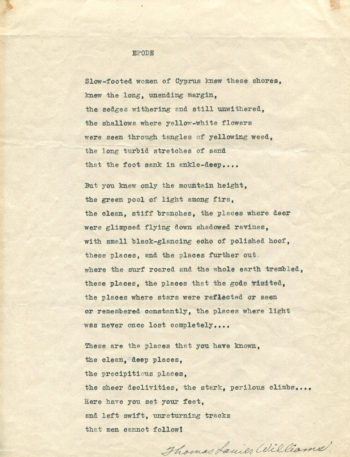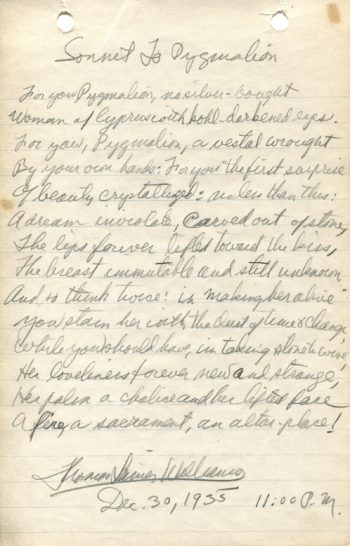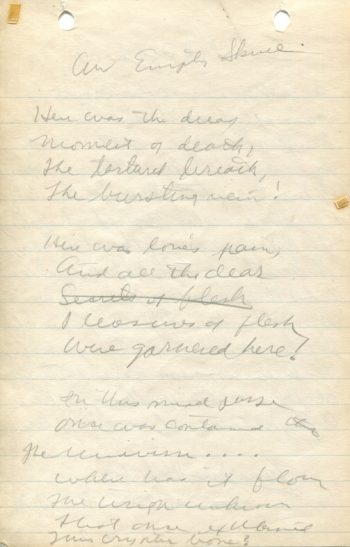
Hotch at 100: Tennessee Williams
In this third installment of our ongoing video interview with A. E. Hotchner, recorded to commemorate his 100th birthday, Hotch talks to us about meeting and working with a young Thomas Lanier “Tennessee” Williams, while they were both Washington University undergraduates enrolled in a playwriting course with William G. B. Carson, and working on the staff of the Eliot literary magazine.
The Modern Literature Collection has been acquiring Hotchner’s manuscripts and other papers since 1967. The A. E. Hotchner Papers currently consist of manuscript and editorial material toward the books Papa Hemingway (1966), Treasure (1970), King of the Hill (1970), The Man Who Lived at the Ritz (1981), Looking for Miracles (1975), Choice People (1984), Louisiana Purchase (1996) and Hemingway in Love (2015), as well as scripts for Hotchner’s adaptations of Hemingway materials for television and original plays for television and the stage.
A major new acquisition from Hotchner this year includes further manuscripts and screenplays, correspondence with Hemingway, photographs and other memorabilia of Hotchner’s time at Washington University, photographs of Hemingway, and many materials related to Hotchner’s long-running charity production of the Hemingway story-cycle “The World of Nick Adams”. These materials are being processed and integrated with the existing A. E. Hotchner Papers.
The Tennessee Williams Collection consists of three poem drafts by Williams written during his time at Washington University; Williams’s University College (now called School of Continuing & Professional Studies) grade card; Williams’s Washington University Greek final examination blue book; four play scripts, The Rose Tattoo, Cat On a Hot Tin Roof, A Streetcar Named Desire and Vieux Carré; a film script for A Streetcar Named Desire; a draft of the libretto, Lord Byron’s Love Letter: Opera In One-Act; the forward to Constructing a Play by Marian Gallaway; two inscribed publicity photographs of Williams; a first issue points for Tennessee Williams dramatist’s play service editions; programs for Williams celebrations; and two posters advertising William’s play productions.
The typescript of Williams’s “Me, Vashya” is held in the William G. B. Carson Papers, which collects materials from Carson’s time as a teacher at Washington University, as well as other materials related to his life and work.



